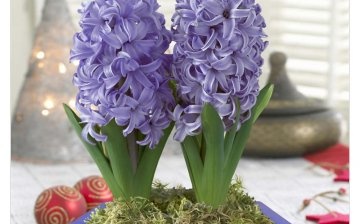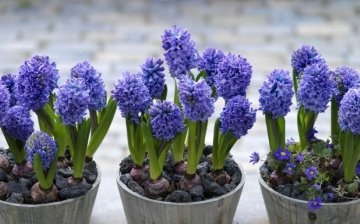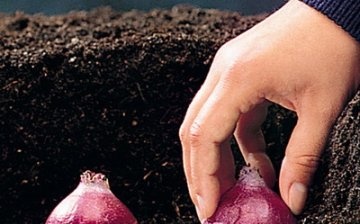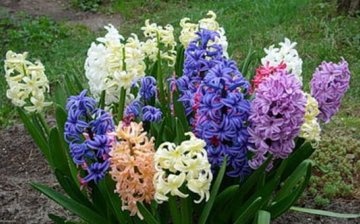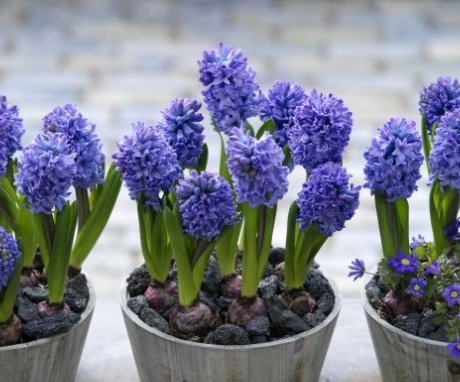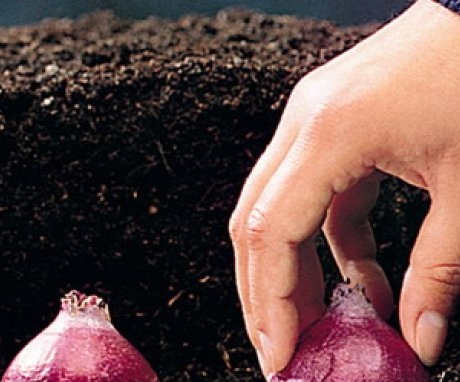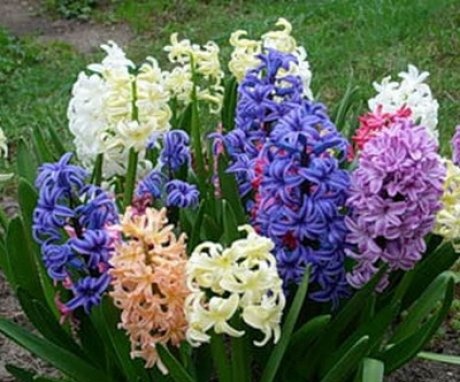Homemade hyacinth: care after flowering
Hyacinth is a charming delicate flower that has long been considered a symbol of spring and youth. It becomes a real decoration of the room, but what to do with it when the time of flowering is over? For a plant like hyacinth, post-flowering care involves digging up and storing the bulb correctly, and everything must be done on time. After a properly aged dormant period, hyacinth will again give young leaves and bloom, delighting you with magnificent buds.
Content:
- What to do right after flowering
- Planting hyacinth in open ground
- Is it possible to re-expel the peduncle at home
What to do right after flowering
So, hyacinth completes floweringwhat to do with it after that? One of the most important rules is that the bulb should not be dug out immediately, as it takes time to recover.
Forcing the peduncle is a serious test for the plant, after which the bulb weakens and needs a recovery period.
When the buds have dried up and the peduncle began to turn yellow, you need to do the following:
- Cut off the peduncle, and the leaves must be preserved until they turn yellow.
- Water the plant regularly, but not often. The land should dry out completely after abundant watering, but real drought should not be allowed.
- Only when the leaves are completely wilted, the bulb needs to be dug out. It must be thoroughly dried; for this, it must be left for about a week in a ventilated place. The desired temperature is about +20 degrees Celsius, and the bulb should not be in the sun.
- The remnants of dried leaves and roots are removed from the dried bulb. You also need to separate the bulbous babies if they have their own roots and they easily detach from the main bulb.
- The bulbs need to have a rest period of at least 3 months. The germination and beauty of future flowers depends on how correct the storage conditions will be.
The dormant period can be divided into three stages, which will correspond to the seasons in nature. Bulbs after distillation it is useless to re-plant in a pot and try to get buds in room conditions, so it is better to plant them in open ground. Before that, they are kept for about 8 weeks at a temperature of about 25 degrees, then the temperature is lowered to about 17 degrees.
Before planting, it is advisable to keep the bulb for a week at a temperature of about degrees.
This will allow the plant to quickly adapt to the external temperature: since the plant is usually dug up in the summer, the dormant period ends by October. When the dormant period ends, you can prepare a place for transplanting the hyacinth into the open ground.
Planting hyacinth in open ground
To plant a hyacinth, you need choose an open place, it is desirable that the bed is on a slight slope. This will allow excess water to be removed from the soil, since flooding is very dangerous for this plant. To avoid impact on the roots of groundwater, sometimes fill beds with wooden or other sides are made.
Landing features:
- Before planting, the soil must be dug up in advance so that it has time to settle as much as possible.
- It is necessary to introduce humus into it (up to 10 kg per square meter of flower beds), as well as various mineral fertilizers: 60 g on the same soil area.superphosphate, 30 g of magnesium sulfate.
- If industrial fertilizers are not available, ash and dolomite flour can be used.
- Usually, hyacinths do not need a large bed, the distance between the bulbs can be 12-1 cm. Therefore, it is necessary to calculate the required amount of fertilizers in advance.
- A fill bed can be multi-layered: the bottom layer is straw or other coarse material that can remove excess moisture, then compost with mineral fertilizer is placed, and only then - a layer of soil.
Planting a hyacinth on a garden bed is carried out as follows:
- It is important to select suitable planting material. There should be no rot on the bulbs; they can be pre-soaked in a weak solution of potassium permanganate for the prevention of diseases.
- The bulbs are planted in a garden bed, the planting depth is about 15-18 cm. Bulbous babies are not need to be planted so deep, a smaller distance is left between them. Hyacinth grows better if you make a sand shirt: the bottom of all holes is first covered with sand, and the bulbs are sprinkled with it after planting. Only after that, the plantings are covered with sod land.
- The bed is watered, the soil needs to be compacted. When cold weather comes, the plantings are covered with a layer of foliage, peat or sawdust. It is recommended to remove the shelter only when the ground thaws.
In the spring, the bulbs will sprout, after which the plants will need to be fed.
Mineral fertilizers are applied in several phases: when sprouts appear, when buds germinate and when they wither. Further care does not cause any special difficulties: the bulbs will need to be watered in a timely manner and the weeds around them will need to be removed.
Is it possible to re-expel the peduncle at home
Re-blooming of hyacinth at home is very rare, and if you want the bulb to flower again, additional liquid dressings will be required.
The use of mineral fertilizers increases the chances of re-flowering, but still there can be no full guarantee.
As for fertilizers:
- The fertilizer contains ammonium nitrate, superphosphate and potassium salts, the proportion will be 2: 1.5: 1, respectively, sometimes in use as fertilizer bird droppings or industrial additives.
- The mixture is diluted in a liter of water, it is introduced into the soil when flowering ends.
- It is advisable to pre-moisten the soil.
- Watering with fertilizers is stopped when the leaves are completely dry.
Proper care of hyacinth bulbs after flowering will allow re- get buds on a flower bed or even indoor growing. This delicate and very beautiful flower has been grown for a very long time, and people will never stop liking it.
More information can be found in the video.



